We use cookies to maximize your online experience with us. By closing this window, you consent to our cookie policy. You can change your cookie settings in your browser any time. For more information, please see our Privacy Policy located on the footer of this site.
Trends + Predictions from Healthcare Design Expo 2024
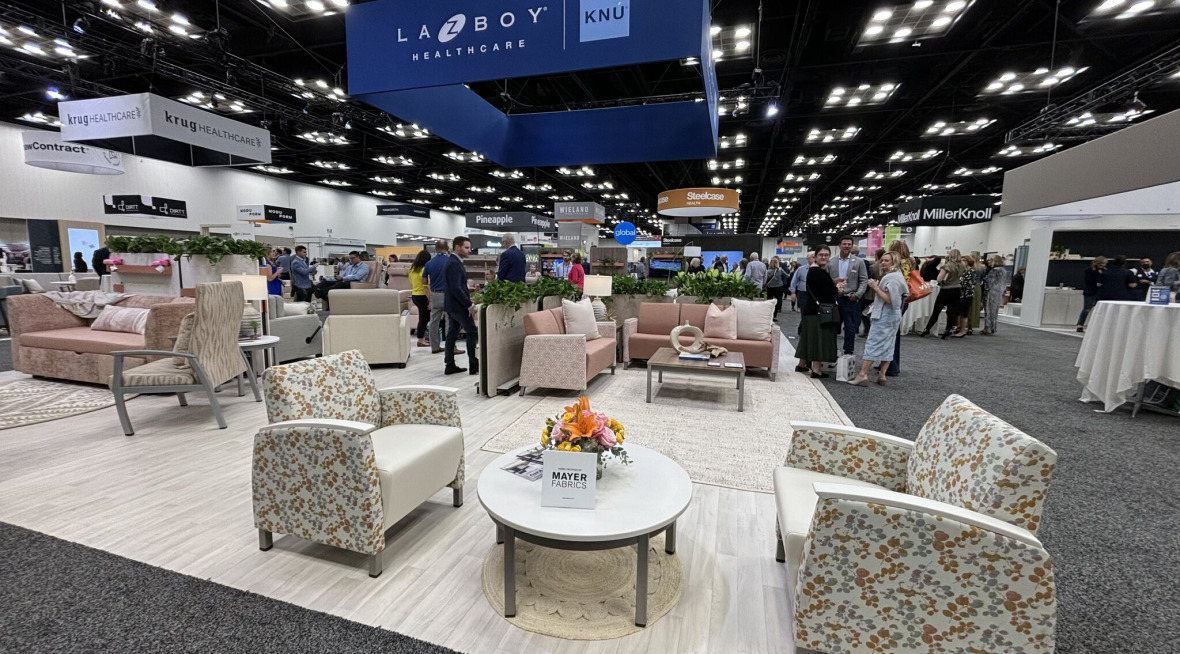
At the recent Healthcare Design Expo, industry professionals came together to explore the latest trends and innovations that are transforming healthcare environments. From the evolving needs of behavioral health to the importance of flexibility and sustainability, the event underscored the growing intersection of design and patient care. Below are some of the most prominent themes that emerged from the Expo, showcasing how healthcare design is shaping the future of healing spaces.
Behavioral Health Focus: A More Comfortable, Welcoming Environment
Behavioral health design continues to evolve, with an emphasis on comfort, warmth, and a more residential aesthetic. This year, there was a strong push for integrating color, textures, and materials that offer a sense of home, helping patients feel more at ease in what are often stressful environments. Innovations such as recliners and other furniture options are currently in development to further improve comfort and provide a more therapeutic experience.
Hospitals and healthcare facilities are also making major investments in behavioral health infrastructure. No longer relegated to the shadows of healthcare design, full builds dedicated to mental health are becoming a focal point, bringing much-needed attention to this important area of care.
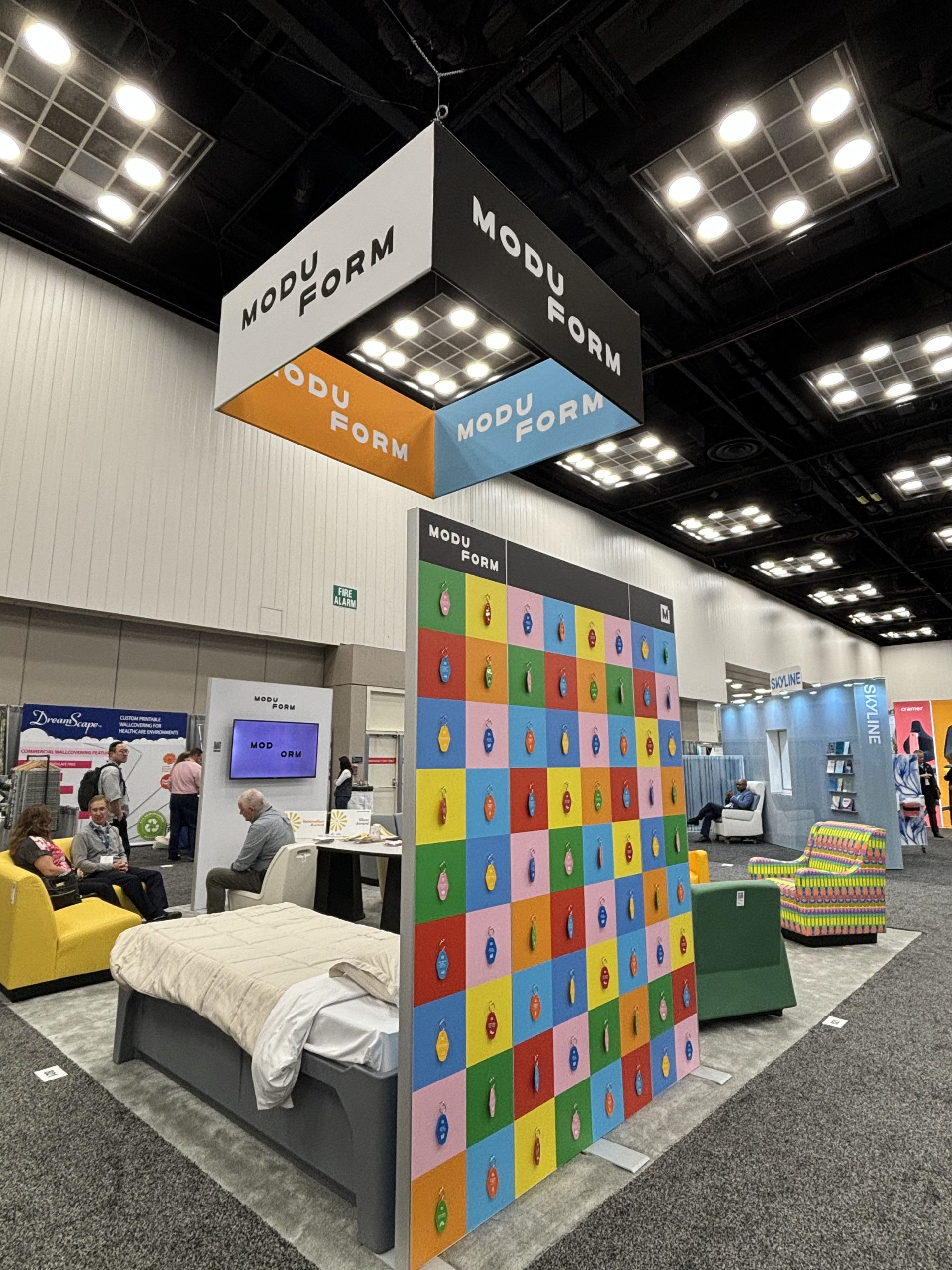
Moduform
“Patient-centered design in behavioral health means creating environments that prioritize comfort, control, and community.”
– Valerie Santanasto, VP | Sales – NJ, dancker
Community Engagement + Connection: Designing with Purpose
A key takeaway from the Expo was the emphasis on community engagement and connection. Healthcare designers are increasingly prioritizing the voices and experiences of the communities they serve, from the artwork selected for facilities to the labor pool involved in the project. By gathering feedback directly from the target population, design teams can ensure that the spaces they create resonate deeply with the people who will use them.
This community-driven approach is particularly evident in the growing focus on regional facilities, which aim to bring care closer to the people. This not only makes healthcare more accessible but also fosters stronger ties between providers and their communities.
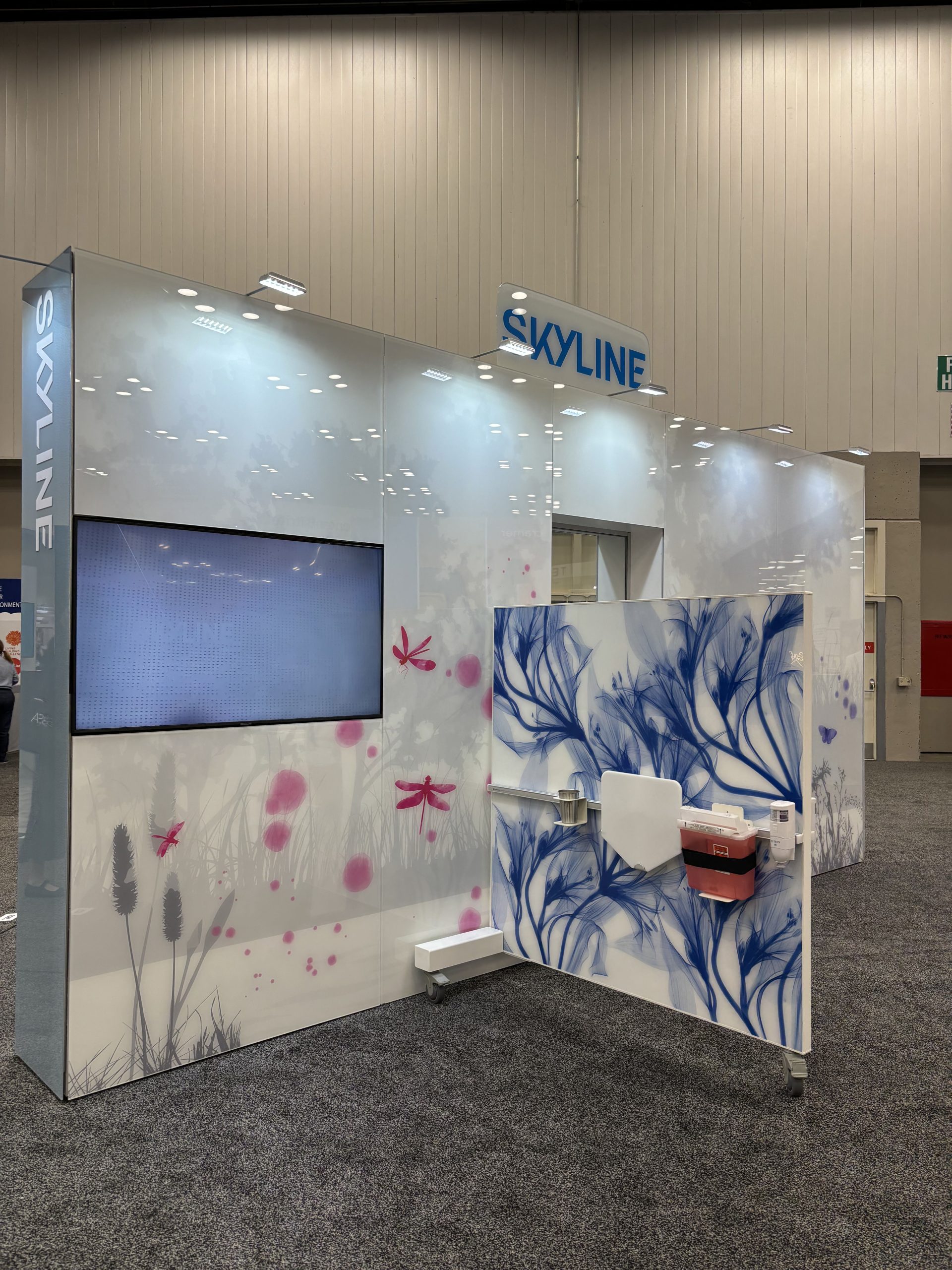
KwickSwitch
“In healthcare design, biophilia and artwork is more than an aesthetic choice – it’s a proven strategy to enhance patient recovery and staff well-being.”
– Krista Jolly, Account Executive | Health, dancker
Aesthetics with a Purpose: Biophilia, Color + Art
This year’s Expo showcased the increasing investment in aesthetics with a purpose. Design is not just about how a space looks but also how it affects patient outcomes. Biophilia, or the integration of natural elements, continues to gain traction as research proves its positive impact on mental health and recovery. Healthcare spaces are incorporating nature in various forms, from living walls and indoor plants to views of the outdoors.
The warm, residential aesthetic is also making its mark. Color, art, and design choices are no longer seen as secondary, but as essential tools for improving the patient experience. Designers are using research-backed strategies to select art, color schemes, and textures that promote calm, focus, and healing, ensuring that every design choice serves a purpose.
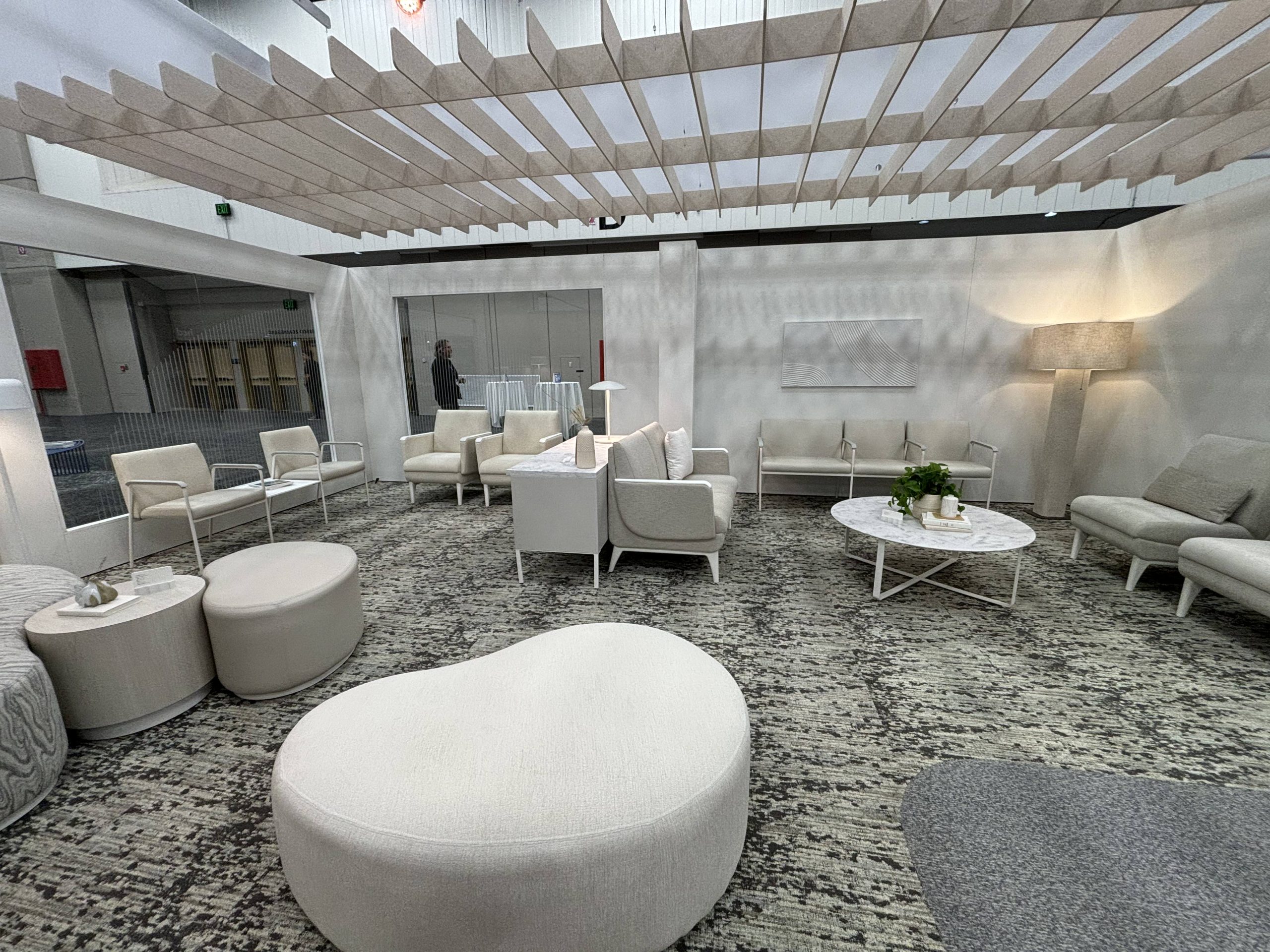
Carolina, an OFS Company
“It’s crucial to incorporate details that evoke a sense of safety, familiarity, calmness, and support for individuals in high-performing and fast-paced healthcare spaces.”
– Maya Dillard, Account Executive | Health, dancker
Flexibility and Adaptability: Designing for the Future
As healthcare needs evolve, so must the facilities that serve them. Flexibility and adaptability were central themes at the Expo, with a focus on solutions that can be easily adjusted to meet changing demands. One example is the use of prefabricated solutions, such as modular casework, walls, and pods, which allow for faster, more efficient construction and the ability to reconfigure spaces as needs shift.
Additionally, adaptive reuse of existing buildings is gaining traction. Old spaces, like Sears stores and former administrative buildings, are being repurposed to meet the growing demand for healthcare. This trend not only helps to preserve valuable structures but also aligns with sustainability goals. Planning for future-proofing is essential, as these spaces need to be able to adapt to evolving healthcare technologies and patient care models.
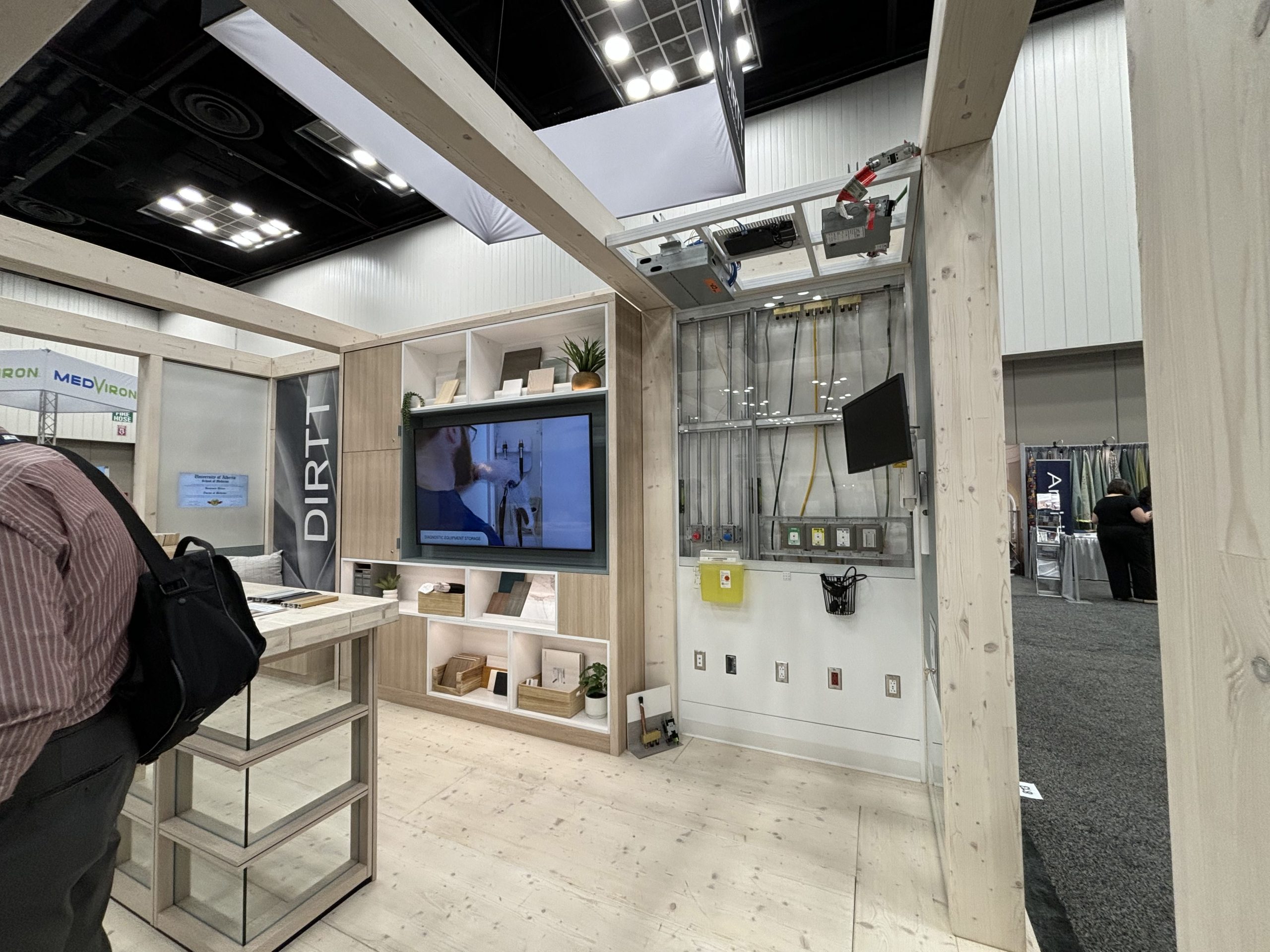
DIRTT
“Healthcare spaces are demanding an elevated level of flexibility. Administrators need to navigate unforeseen challenges and need environments that promote resilience and versatility.”
– Rita Lemley, VP | Manufactured Interior Construction, Forbuild
Emergency Departments: Innovation in Care Spaces
The design of emergency departments (EDs) is undergoing significant transformation. One of the key innovations discussed at the Expo was the importance of segmentation within the ED. Creating distinct zones for low-acuity and high-acuity patients ensures that resources are used efficiently, and that patients receive the appropriate level of care. Special consideration is also being given to the needs of mental health crisis patients, with designs isolating them from the general population to create a more supportive and less stressful environment.
Waiting areas are also being rethought to provide choice and comfort. For example, neurodiverse patients are considered when designing these spaces, with thoughtful color schemes and flexible seating options that cater to different sensory needs. Meanwhile, for pediatric patients, there is an increased focus on creating reduced-stimulation areas that are adjacent to emergency rooms, offering a calm and comforting environment during stressful moments.
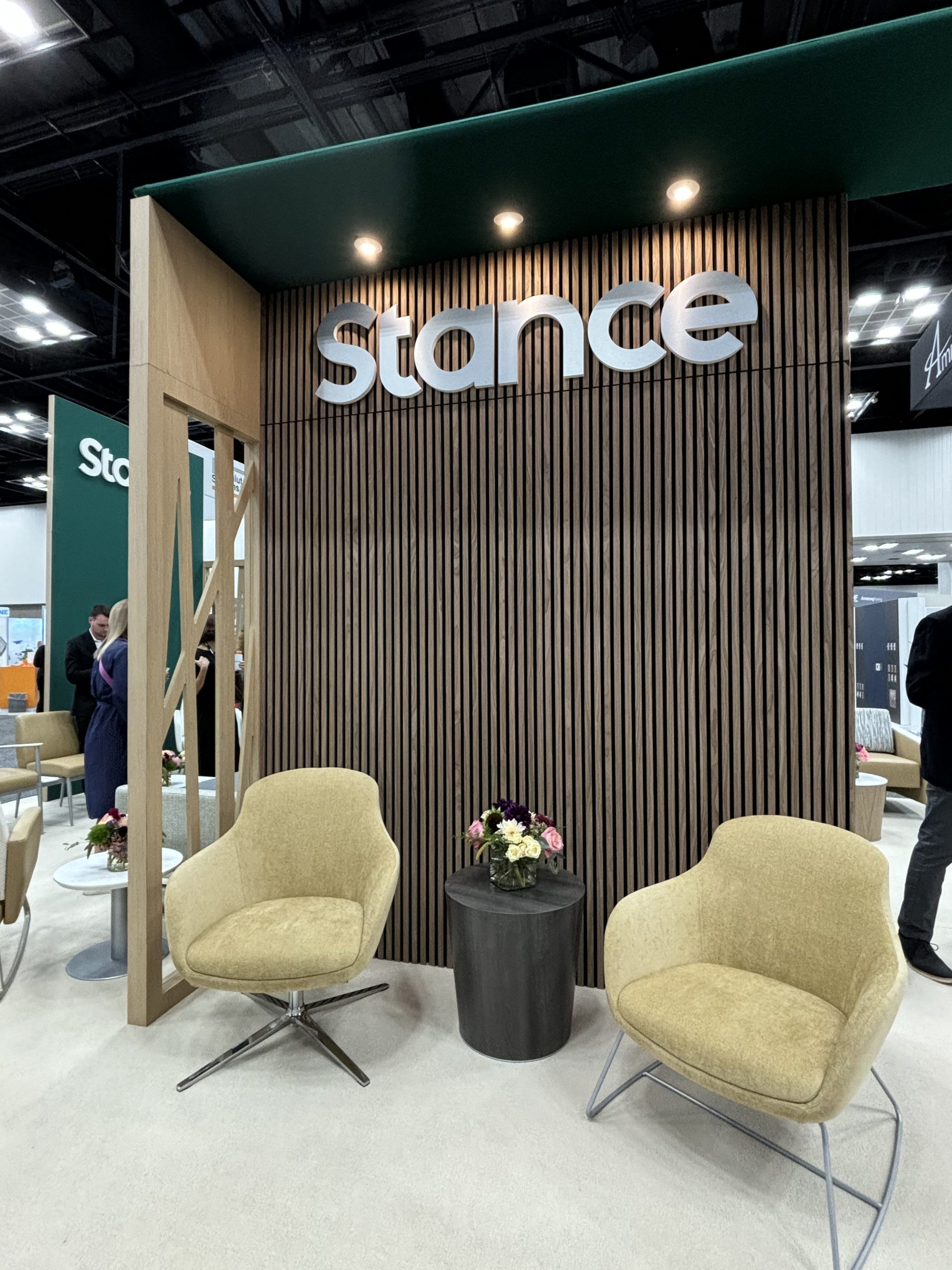
Stance
“It’s all about the right patient in the right place at the right time. Not everything can be done in that space, but for a large percentage of the patients coming to an ED, these are viable treatment spaces.”
– Ethan Hopkins, Medical Planner, HKS
Sustainability, Innovation + Technology Integration
As with all industries, sustainability is a growing priority in healthcare design. The Expo highlighted the importance of selecting sustainable materials and making design choices that reduce environmental impact. Innovations in cancer care were also showcased, with new designs for cancer treatment spaces focused on making patients feel more comfortable and supported during their treatment journey.
Another emerging trend is the promotion of movement within healthcare spaces. To reduce stress and encourage positive physical activity, furniture like chairs with flexible backs, gliders, and beanbags are being integrated into behavioral health spaces. These designs encourage patients to move, fidget, and stay engaged, supporting both their physical and mental well-being.
Healthcare clients and project teams continue to innovate, exploring creative approaches to patient care that integrate cutting-edge technologies like AI and drones. For example, new solutions are being developed to improve the patient waiting experience, such as location-based notifications to let patients know where they are in the process. Dictation tools are also being implemented in patient rooms to streamline communication between medical professionals.
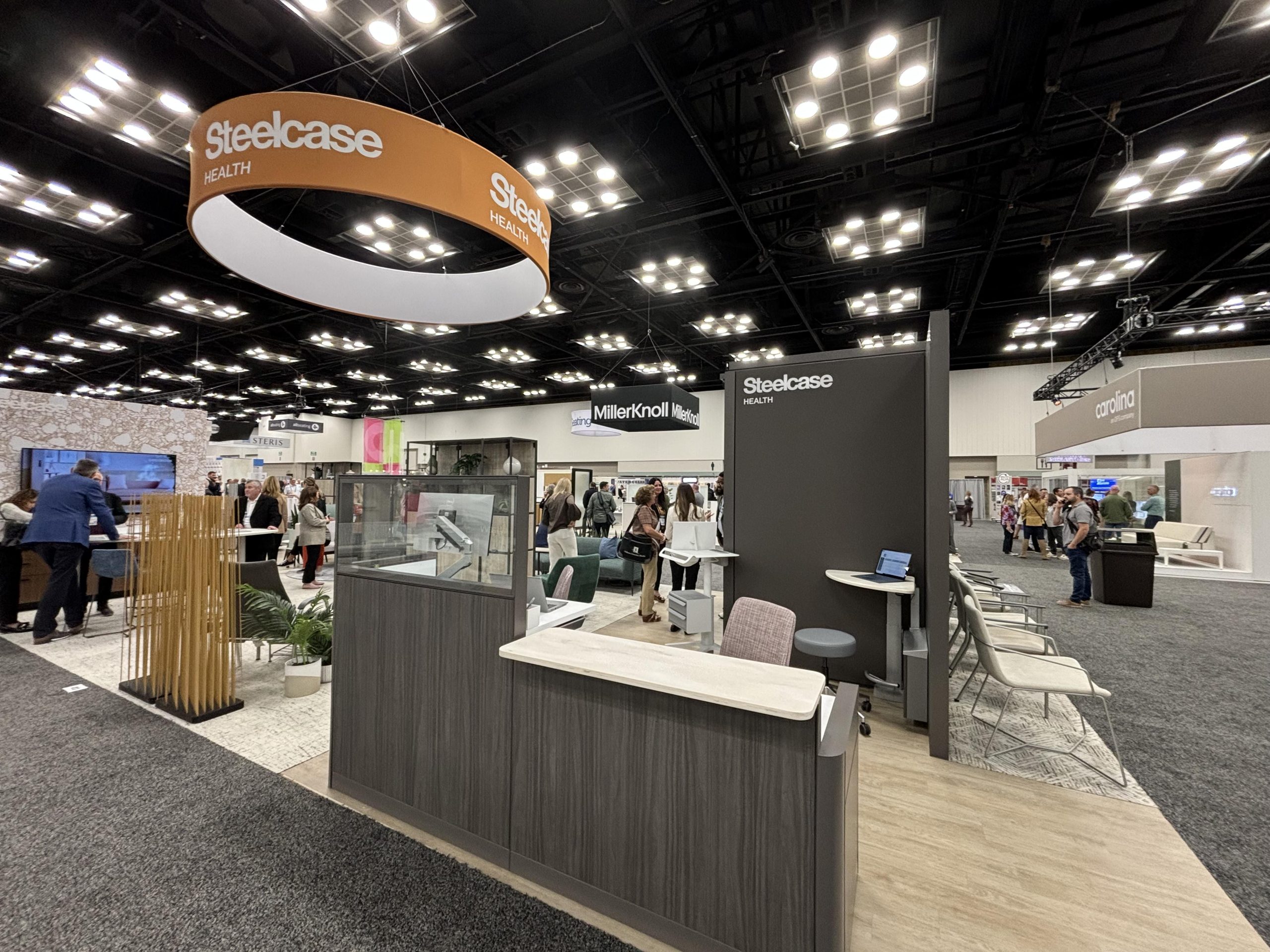
Steelcase Health
“The growing awareness and demand for environmentally friendly products in the healthcare sector highlights the importance of sustainability.”
– Katie VanWagner, Designer | Health Applications, Steelcase
Looking Ahead: The Future of Healthcare Design
The 2024 Healthcare Design Expo served as a powerful reminder of the transformative role design plays in healthcare. Whether through the lens of behavioral health, community engagement, or sustainability, it’s clear that healthcare environments are evolving to meet the needs of both patients and providers. As these trends continue to develop, the collaboration between designers, healthcare professionals, and communities will be key to creating spaces that support better outcomes for all.
With refreshed focus on flexibility, well-being, and innovation, we anticipate a future workplace that caters to employees’ evolving needs, enhancing their productivity, satisfaction, and work-life balance.
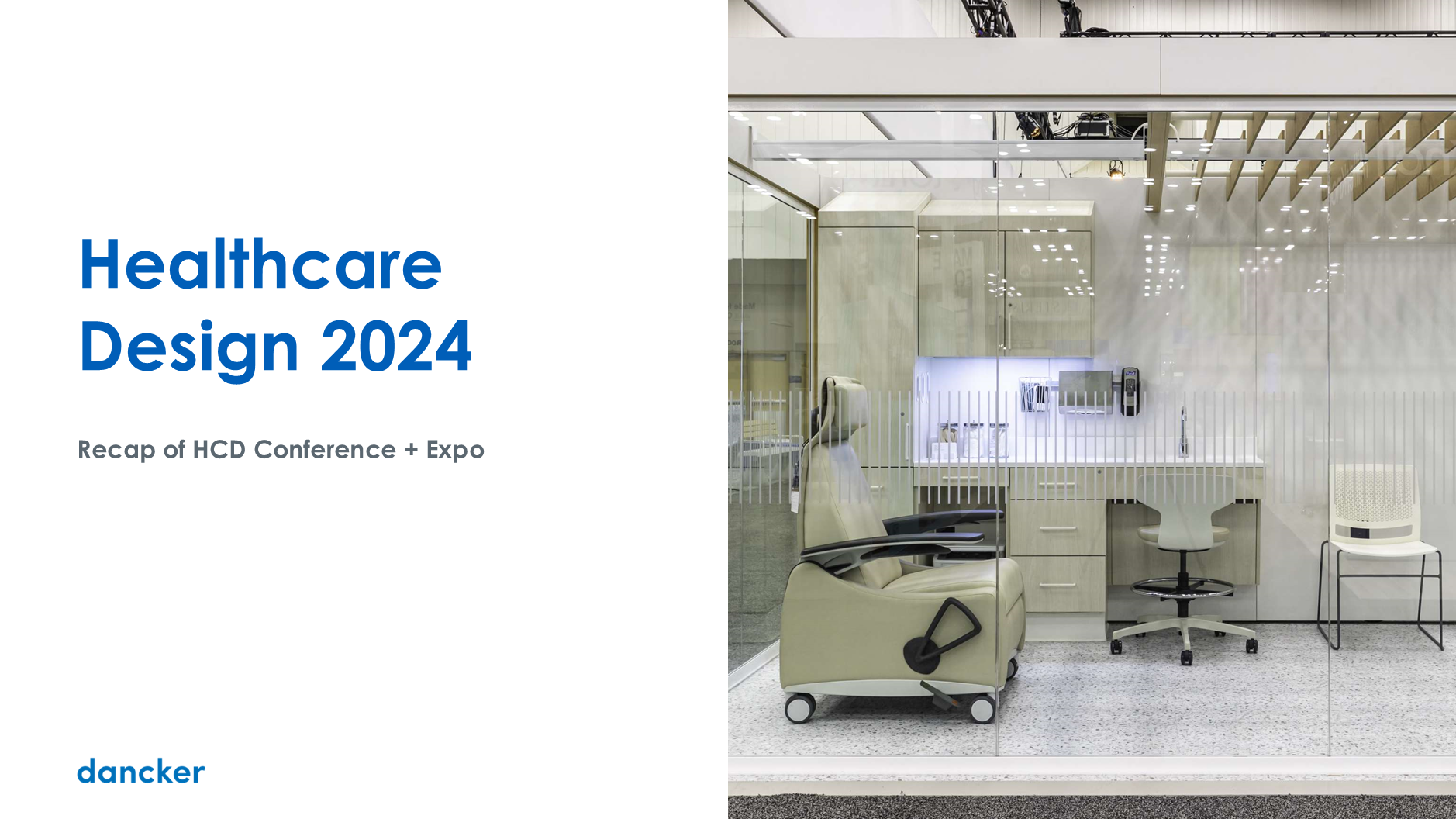 Looking for more of the best trends from Healthcare Design Conference + Expo 2024?
Looking for more of the best trends from Healthcare Design Conference + Expo 2024?
